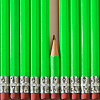Skip over navigation








Or search by topic
Number and algebra
Geometry and measure
Probability and statistics
Working mathematically
Advanced mathematics
For younger learners
3D Shapes
Tet-trouble
Age 14 to 16
Challenge Level 





Is it possible to have a tetrahedron whose six edges have lengths 10, 20, 30, 40, 50 and 60 units?
Nine Colours
Age 11 to 16
Challenge Level 





Can you use small coloured cubes to make a 3 by 3 by 3 cube so that each face of the bigger cube contains one of each colour?
Marbles in a Box
Age 11 to 16
Challenge Level 





How many winning lines can you make in a three-dimensional version of noughts and crosses?
Triangles to Tetrahedra
Age 11 to 14
Challenge Level 





Imagine you have an unlimited number of four types of triangle. How many different tetrahedra can you make?

Stretched Surfaces
Age 14 to 16
ShortChallenge Level 





The edges of a cube are stretched, can you find the new surface area?

Rotation Identification
Age 11 to 14
ShortChallenge Level 





Which of these can be obtained by rotating this shape?

Which Face?
Age 14 to 16
ShortChallenge Level 





Which faces are opposite each other when this net is folded into a cube?

Multiplication Cube
Age 11 to 14
ShortChallenge Level 





The net shown is folded up to form a cube. What is the largest possible vertex product?

